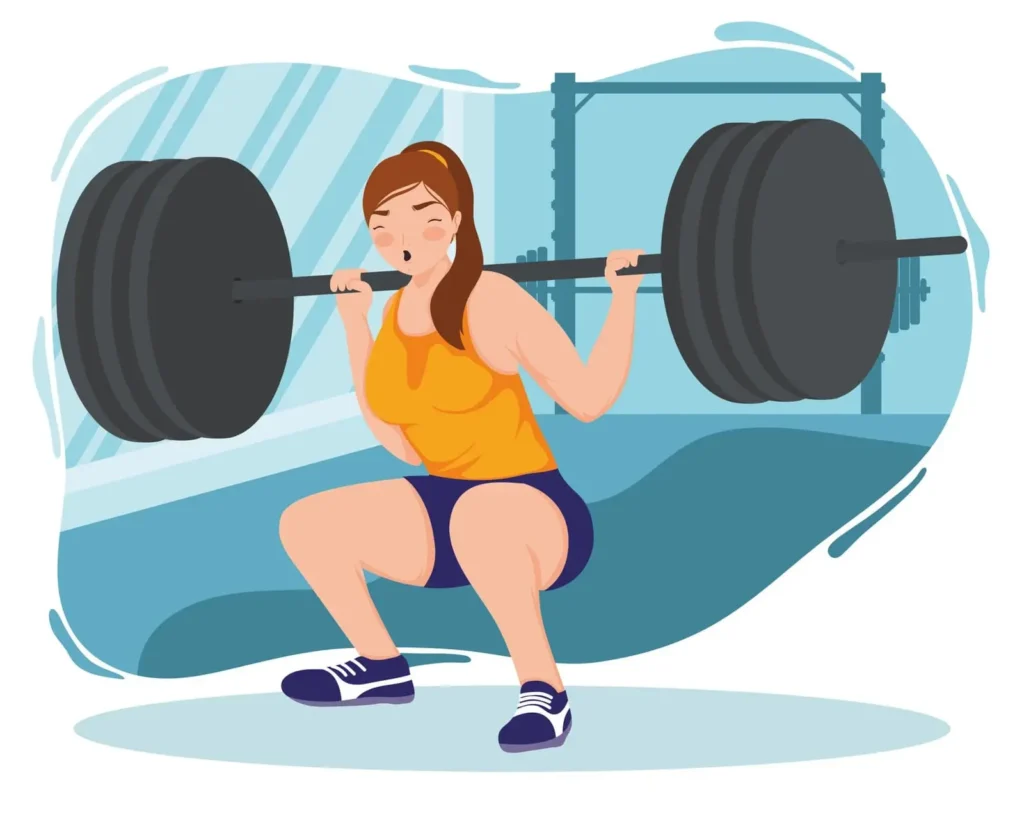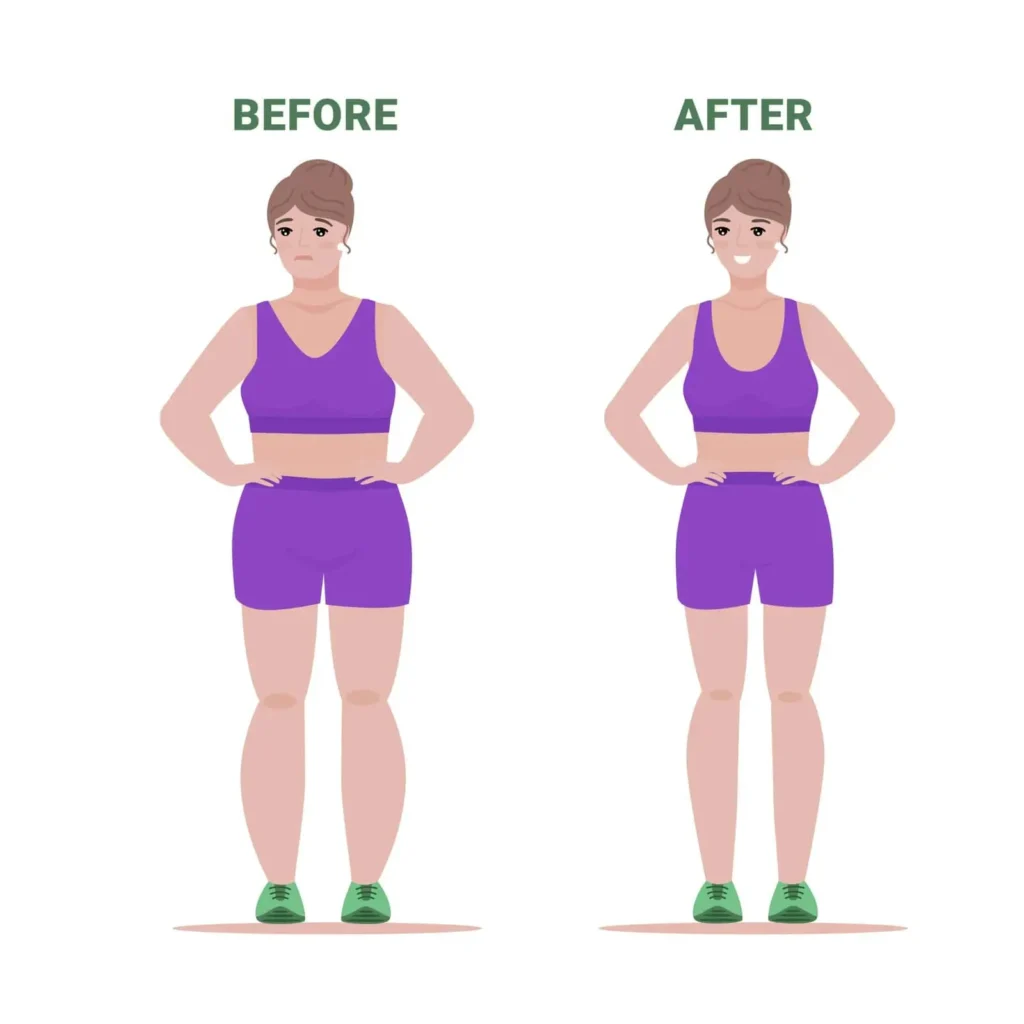Introduction
In fitness and strength training, women are starting to prefer weightlifting and resistance exercises. As they work hard, it’s important to notice signs that show they’re getting stronger and building muscle. Recognizing these indicators will allow you to track your progress and feel proud of your accomplishments as you go along. This article is dedicated to exploring the signs of gaining muscle female. It will give you advice on how to notice these signs well, so you can feel sure about how you’re doing on your fitness journey and feel happy about your progress.
What is Visible Muscle Definition?
Visible muscle definition refers to the clarity and prominence of muscle contours and shapes beneath the skin’s surface. When someone has visible muscle definition, it means that their muscles are well-defined and easily distinguishable, often appearing more sculpted and toned. This clarity of definition occurs when the layer of subcutaneous fat covering the muscles is reduced, allowing the underlying muscle structure to be more apparent.
Several factors contribute to visible muscle definition are:
- Low Body Fat Percentage
- Muscle Size and Development
- Muscle Tone
- Hydration Levels
- Genetics
Primary Signs of Gaining Muscle Female
One of the primary signs of gaining muscle female is experiencing growth and strength in muscles during workouts. By doing exercises like lifting weights, their muscles get used to it and become stronger. This progression in strength directly correlates with muscle hypertrophy, the process by which muscle fibers increase in size and strength. When you can lift heavier weights, do more reps, or find exercises easier, it means you’re getting stronger, which shows your muscles are growing. Seeing these improvements not only makes you more motivated but also proves that your training is working. For women on their fitness journey, understanding the connection between increased strength and muscle gain is crucial for achieving desired physical changes and performance enhancements.
1- Changes in Body Composition
| Changes | Description |
| Decrease in Body Fat Percentage | – Reduction in the percentage of body fat relative to total body weight. |
| Increase in Muscle Mass | – Growth and development of muscle tissue, resulting in larger and stronger muscles. |
2- Tightened Clothing Fit: A Sign of Gaining Muscle in Females

When you’re working to build muscle, you might notice that your clothes fit differently. A big clue is when your clothes feel tighter around your muscles instead of loose because of extra fat. This change happens because your body is replacing fat with more muscle. Women might see their shirts fitting snugly around their arms and shoulders or their jeans feeling tighter around their thighs and butt. Not just a physical change, this also gives you a mental boost, reminding you of all the effort you’re putting into strength training. When your clothes fit tighter around muscles instead of loose around fat, it shows you’ve reached an important step towards getting a leaner, more toned body.
When women start lifting weights and doing resistance training to build muscle, they might notice their clothes fitting differently. Instead of feeling loose because of extra fat, clothes might feel tighter around muscles. This happens because they’re gaining muscle and losing fat, giving them a more toned look. Feeling clothes fit tighter can be really motivating, showing them they’re making progress. It’s not just about the physical feeling of tighter clothes; it’s also about feeling stronger, more confident, and proud of the changes happening in their bodies as they gain muscle.
3- Enhanced Endurance
- Improved ability to sustain physical activity for longer durations.
- Decreased fatigue during workouts.
- Enhanced recovery between sets and exercises.
- Increased resistance to muscle fatigue and exhaustion.
- Ability to maintain intensity throughout prolonged workouts.
4-Progressive Overload: Key to Muscle Growth in Females

Progressive overload is super important in strength training, especially for women who want to build muscle. It means gradually making workouts harder over time to push muscles to get stronger and bigger. For women aiming to gain muscle, this might mean lifting heavier weights or doing more reps during workouts consistently. By keeping up with this gradual increase in challenge, muscles get stronger and grow. Following progressive overload helps women stimulate muscle growth and reach their fitness goals. So, knowing and using progressive overload techniques is key for women to maximize muscle gains and improve strength and endurance.
5- Muscle Soreness
- Experiencing soreness in muscles 24 to 48 hours post-exercise.
- Characterized by stiffness, tenderness, and discomfort in the exercised muscles.
- Occurs due to microscopic damage to muscle fibers during intense or unfamiliar exercises.
- Commonly felt after resistance training, especially when introducing new exercises or increasing intensity.
- Indicates that muscles are adapting and repairing themselves to become stronger.
- Typically resolves within a few days and diminishes with regular training.
- Can be managed with adequate rest, hydration, proper nutrition, and light activity.
- Not necessarily a measure of workout effectiveness but often accompanies muscle growth and strength gains.
6- Resting Metabolic Rate (RMR) Increase
Resting Metabolic Rate (RMR) refers to the number of calories your body burns at rest to maintain basic physiological functions such as breathing, circulating blood, and regulating temperature. One significant signs of gaining muscle female is an increase in RMR. As women engage in resistance training and build muscle mass, their bodies require more energy to maintain these newly acquired muscles even at rest. This increased muscle mass elevates the body’s metabolic rate, leading to a higher RMR. Essentially, muscles are metabolically active tissues, meaning they burn more calories compared to fat tissue. Therefore, as muscle mass increases, so does the body’s capacity to burn calories, even when not engaged in physical activity. Monitoring changes in RMR can provide valuable insights into the effectiveness of a resistance training program and serve as an indicator of muscle gain in females.
7- Positive Changes in Body Image

Witnessing positive changes in body image is a significant aspect of the journey towards gaining muscle in females. As women engage in resistance training and build muscle, they often experience a transformation not only in their physical appearance but also in their perception of themselves. This shift towards a more positive body image encompasses various aspects, including increased confidence, enhanced self-esteem, and a greater appreciation for one’s strength and capabilities. Seeing tangible signs of muscle gain, such as improved muscle definition and a leaner physique, reinforces a sense of accomplishment and pride in one’s efforts.
Conclusion:
Recognizing the signs of gaining muscle female is essential for monitoring progress and staying motivated on the fitness journey. Visible muscle definition, increased strength, and changes in body composition are tangible signs of progress. By adjusting workouts and nutrition accordingly, women can confidently achieve their muscle-building goals.
Frequently Asked Questions:
Q1: How long does it take to see signs of muscle gain?
Typically, noticeable signs of muscle gain can appear within a few weeks to a few months, depending on factors such as genetics, workout intensity, and nutrition.
Q2: Can females gain muscle as effectively as males?
Yes, women can build muscle effectively through resistance training. While hormonal differences may affect the rate of muscle gain compared to males, women can still achieve significant results with dedication and consistency.
Q3: Do I need to lift heavy weights to gain muscle?
While lifting heavy weights can stimulate muscle growth, it’s not the only approach. Consistent resistance training with challenging but manageable weights, coupled with proper nutrition and recovery, can also promote muscle gain.
Q4: Will I get bulky from lifting weights as a female?
Building bulky muscles requires specific training regimens and often involves a combination of heavy lifting, high-calorie intake, and possibly supplements. Most women engaging in regular resistance training will not become bulky but rather achieve a toned and sculpted physique.
Q5: How important is nutrition for muscle gain in females?
Nutrition plays a crucial role in supporting muscle growth in females. Consuming an adequate amount of protein, along with balanced carbohydrates and healthy fats, provides the necessary building blocks for muscle repair and growth.
Q6: Can I lose weight while gaining muscle?
Yes, it’s possible to lose fat and gain muscle simultaneously, especially for beginners or those returning to fitness after a break. This process, known as body recomposition, requires a combination of resistance training, cardio exercise, and a slight caloric deficit with adequate protein intake.
Q7: Should I be concerned about bulking up if I have a high body fat percentage?
To reveal muscle definition without significant bulk, focus on reducing body fat through strength training, cardio, and a balanced diet.
Q8: How often should I reassess my progress in muscle gain?
It’s beneficial to reassess progress every 4-6 weeks by tracking strength gains, taking measurements, and evaluating changes in body composition. Adjustments to workouts and nutrition can then be made based on these assessments to continue progressing toward muscle gain goals.
Explore our website FuseBay for more interesting and informative articles.








